13/09: The Henry Ford Museum
Category: General
Posted by: The Agnew Family
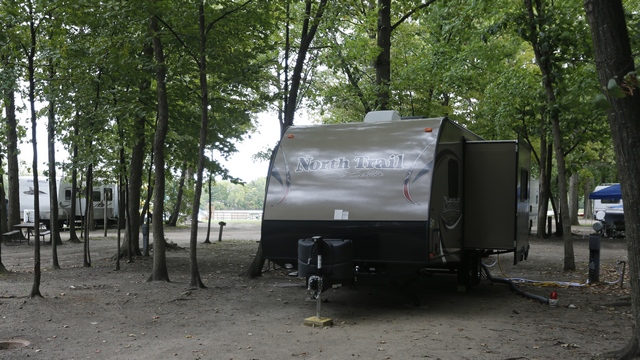
I had complained to Ed that when he took photos of the park, he hadn't taken any of the trailer on the campsite. We were in a pretty, treed campsite --- would never have gotten the big 5th wheel in here.
The reason for stopping in Ypsilanti was to go to the Henry Ford Museum. When you look at Michigan tourism sites the Ford museum is always near the top of the list.
The Edison Institute was dedicated by President Herbert Hoover to Ford's longtime friend Thomas Edison on October 21, 1929 – the 50th anniversary of the first successful incandescent light bulb. The Edison Institute consists of The Henry Ford Museum, Greenfield Village and the Ford Institute. On this trip we're just going to see the museum, next time we'll plan on visiting the village.
The museum building itself is a work of art. According to information at one of the exhibits, the exhibit was installed and the museum built around it.
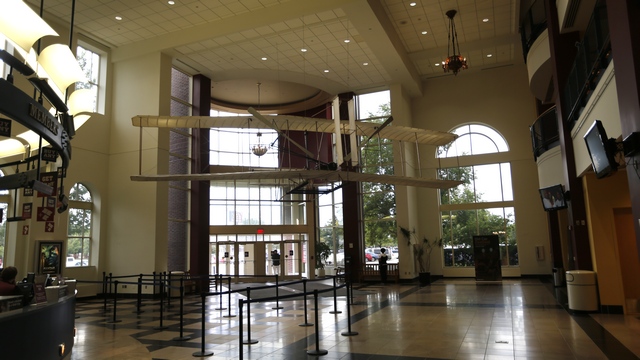
One of the main halls. The hall was so high you didn't notice the bi-plane over your head till you walked away and looked back.
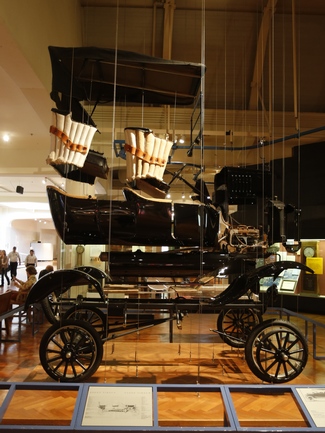
The model T in pieces. Did you know that Henry Ford started two car companies that failed? His third company was successful.
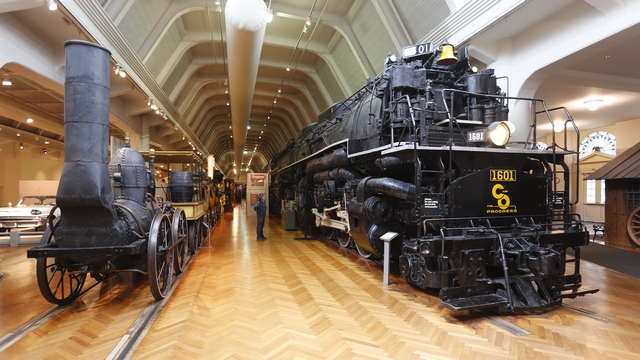
The steam engine on the right is the Allegheny Locomotive which was built in 1941 and weighed in at 600 tons, this was one of the largest steam-powered locomotives ever built. The steam engine on the left pulled cars that looked like stage coaches.
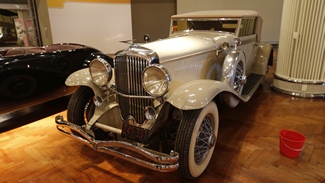
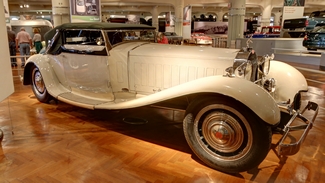
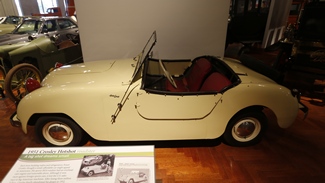
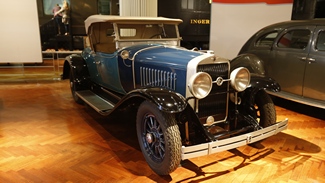
There are a lot of automobiles in the museum. One section consisting of about 20 vehicles showed the history of the automobile. another section included luxury vehicles, race cars, trailers, a motor home, sports cars and muscle cars. Top Left: 1931 Duesenberg Model J, only 481 model Js were built between 1928 and 1935. No two were identical because independent coachbuilders crafted each body to the buyer's specifications. Top Right: 1931 Bugatti Type 41 Royale. Longer than a Duesenberg, twice the horsepower of a Rolls-Royce, more costly than both put together. The Bugatti Royale was the ultimate automobile. Bugatti built only 6 Royales. Bottom Left: one of my favorites the 1951 Crosley Hotshot Roadster Bottom Right: another one of my favorites, the 1927 LaSalle Roadster. You could have it in any color --- black too.
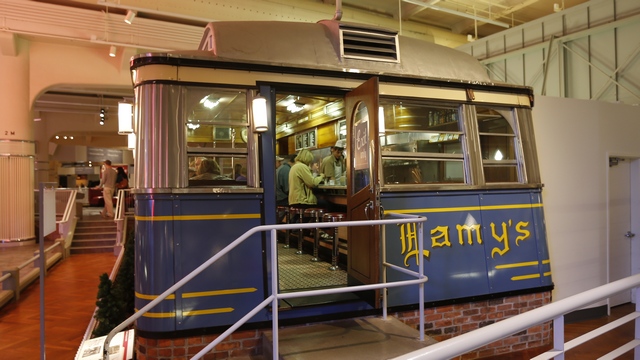
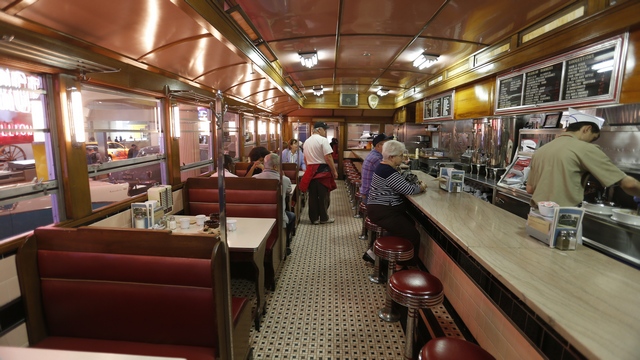
There were three choices for lunch --- the Michigan Cafe, the Wienermobile Cafe (yup there was a Oscar Meyer Wienermobile there), and Larry's Dinner. As Larry's dinner was with the cars it's were we chose to stop for lunch. It was an authentic dinner complete with it's 1940's menu --- unfortunately you couldn't order off of it. You had to use the current menu. 65 cents for a dinner would have been a really good deal.
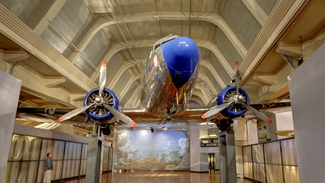
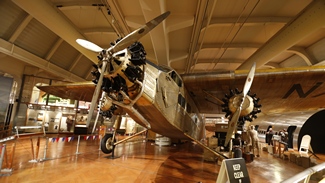
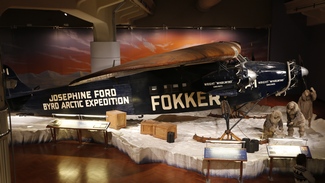
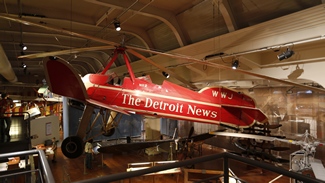
To really give you a feel for the size of the building, you just had to look at the DC-3 hanging from the ceiling. The plane actually looked smallish. Top Left: DC-3 Top Right: 1928 Ford Trimotor, this was the plane Admiral Byrd flew over the South Pole. Bottom Left: 1926 Fokker Trimotor. Byrd flew this plane to the north pole. Edsel Ford funded Byrd's trip to the artic so the plane was named for his daughter Josephine. The manufactured wanted to be sure no one mistook the plane for a ford so he painted the giant "FOKKER" on the wings and the fuselage. Bottom Right: 1931 Pitcairn Autogiro. The plane took aerial photos for the Detroit News.
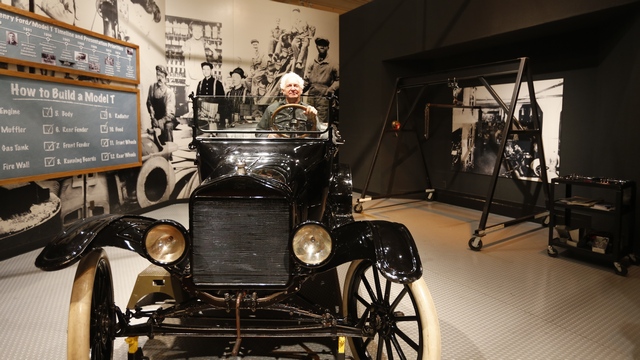
This model T is taken apart each morning before the museum opens and is put together by visitors each day.
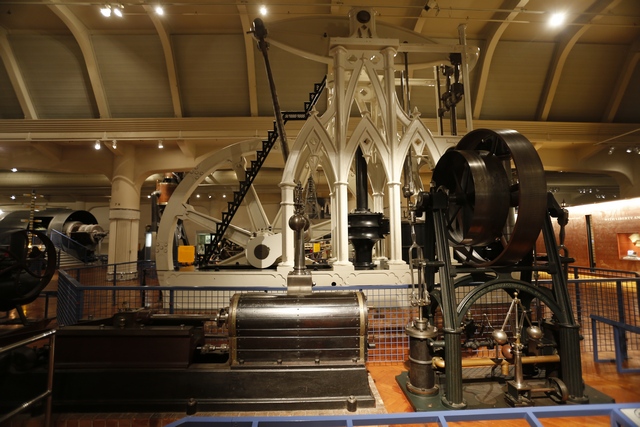
I think this is the Gothic Steam engine, one of several steam engines on display. Many of these steam engines were built in manufacturing plants to provide electricity. Once electricity was more readily available the steam engines were removed.
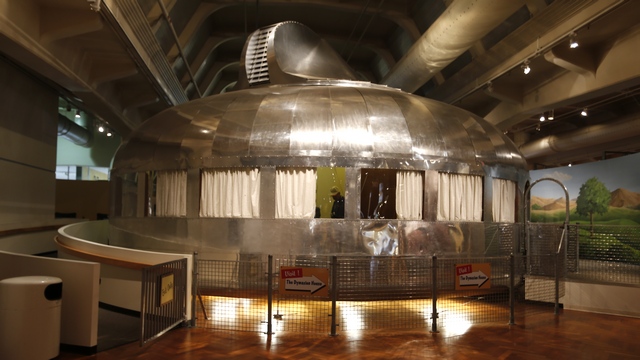
Buckminster Fuller designed Dymaxion House in 1929 and redesigned it in 1945. He had hoped that this aircraft aluminum prefab home would help with the housing shortage after world war II. Unfortunately, the cost of re-tooling the Boeing Plant was expensive and investors couldn't be found. Investor William Graham bought up the two prototypes and assembled them on his lake front property as an extension to an existing ranch house. The house was inhabited for about 30 years. In 1990 the Graham family donated this house to the Henry Ford Museum. A painstaking process was used to restore the Dymaxion house.